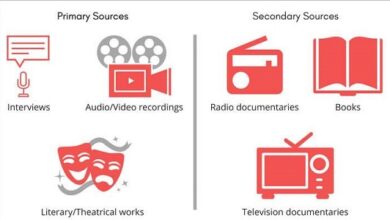Advantages and disadvantages of probability sampling
The probability sampling is an instrument which aims to determine which part of a specific population should be examined in order to establish differences. The sample should represent the population in which the essential traits for the investigation are best reproduced. Advantages and disadvantages of probability sampling
The sample will be representative and useful, only if it reflects the similarities and differences that a population may have.
Characteristics of probability sampling
The probability sampling is characterized by that all individuals have the same probability of being chosen to be part of a sample and consequently all possible samples have the same probability of being selected.
We speak of probability sampling when a series of characteristics are met:
If the set of possible samples can be defined
This refers to the fact that you must have a sampling frame or sampling frame that is nothing more than the list of all the elements that make up the universe under study, for example, if our universe under study is the medical students of a certain university , you must have the list of all those elements, that is, of all the medical students of that university and that would be our sampling frame.
Known probability of selection P (s)
This means that all the elements of our sampling frame have the same probability of being chosen.
Probability greater than zero
Within a probability sampling test, the selection process guarantees that all elements have a greater than zero probability of being included in the sample. Advantages and disadvantages of probability sampling
Random mechanism
The random mechanism ensures that each sample has the same probability of being chosen. For this reason, we can say with greater property that probability sampling is the way to select a sufficiently representative sample of a publication whose information allows us to infer the properties and characteristics of a population.
This procedure is not useful when the population is very large.
Advantages of probability sampling
- The probability sampling is simple and easy to understand.
- Avoid taking a census.
- Quick calculation of measures and variances.
- There are software packages to analyze data.
Disadvantages of probability sampling
- It is required in advance that you have a complete list of the entire population.
- There is a margin of error.
- If we work with small samples, it is possible that the entire population is not properly represented, which is why a complete sample must be handled.
For example, when removing balls from a drum the individuals in the population are numbered from 1 to N, N balls are drawn from the drum, and these individuals will be the sample. Everyone has an equal chance of being selected. Advantages and disadvantages of probability sampling
Systematic random sampling
Within probability sampling, we can highlight systematic random sampling, it is a systematic sampling technique that researchers often prefer because it is simple to perform and has optimal results in many conditions.
In systematic random sampling the researcher randomly chooses the first piece or subject within a population, then the researcher will select each nth subject from the list.
This type of procedure is very simple and can be done manually. Characteristics are unlikely to be repeated in every nth subject, so the results are representative of the entire population.
For example, the researcher has a total population of sixty individuals and needs twelve subjects, first he chooses his starting number two and continues with the interval five, then the members of his sample would be individuals, two, seven, twelve, seventeen, twenty two , twenty-seven, thirty-two, thirty-seven, forty-two, forty-seven, fifty-two, and fifty-seven. Advantages and disadvantages of probability sampling
Types of probability sampling
We will detail 2 different types of probability sampling:
Stratified sampling
Stratified sampling is another type of probability sampling where the researcher separates the entire population into different subgroups or strata, then randomly selects the subjects from the different strata.
The most common strata used in stratified random sampling are age, gender, socioeconomic level, religion, nationality and level of studies achieved, for example, suppose we have three strata of 32 subjects each, a fraction is used samples of five and thirty-twelfths, and then we randomly tested five subjects from each stratum respectively.
The objective is that the population obtained is smaller, and in this way more specific.
Cluster sampling
To carry out this sampling, the researcher gathers his population sample by following certain steps. The first thing is to separate various groups, and individually select the subjects from each group by random sampling. Advantages and disadvantages of probability sampling
In cluster sampling, the researcher can also choose to include the entire cluster and not just a subset, for example, if you have in mind to conduct a survey of first-year university students in a country, it is required to interview ninety-six university students, given the impossibility of accessing a stratified sample, a sample of two clusters of eight students is considered.
We can conclude by saying that probability sampling is a statistical tool that gives us the opportunity to make projections within a certain population of individuals, without having to use data from a complete population. In this way we can save some data, but care must be taken when using it in very large populations since there is a proportional margin of error.

